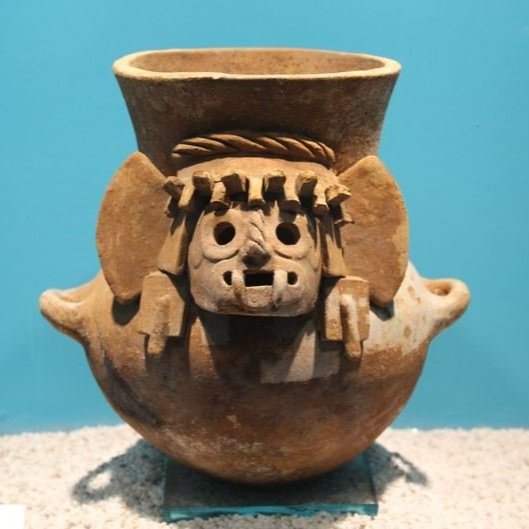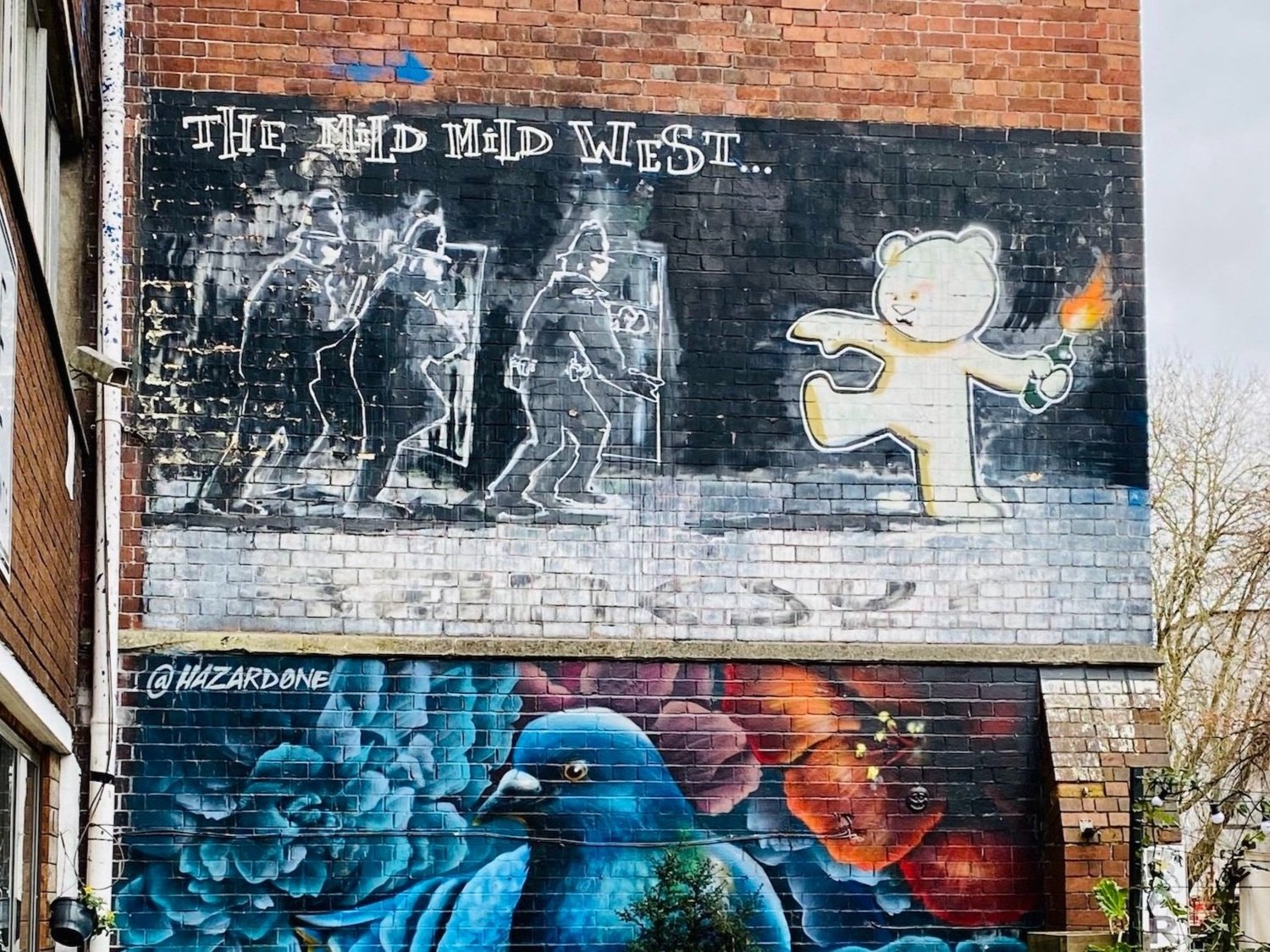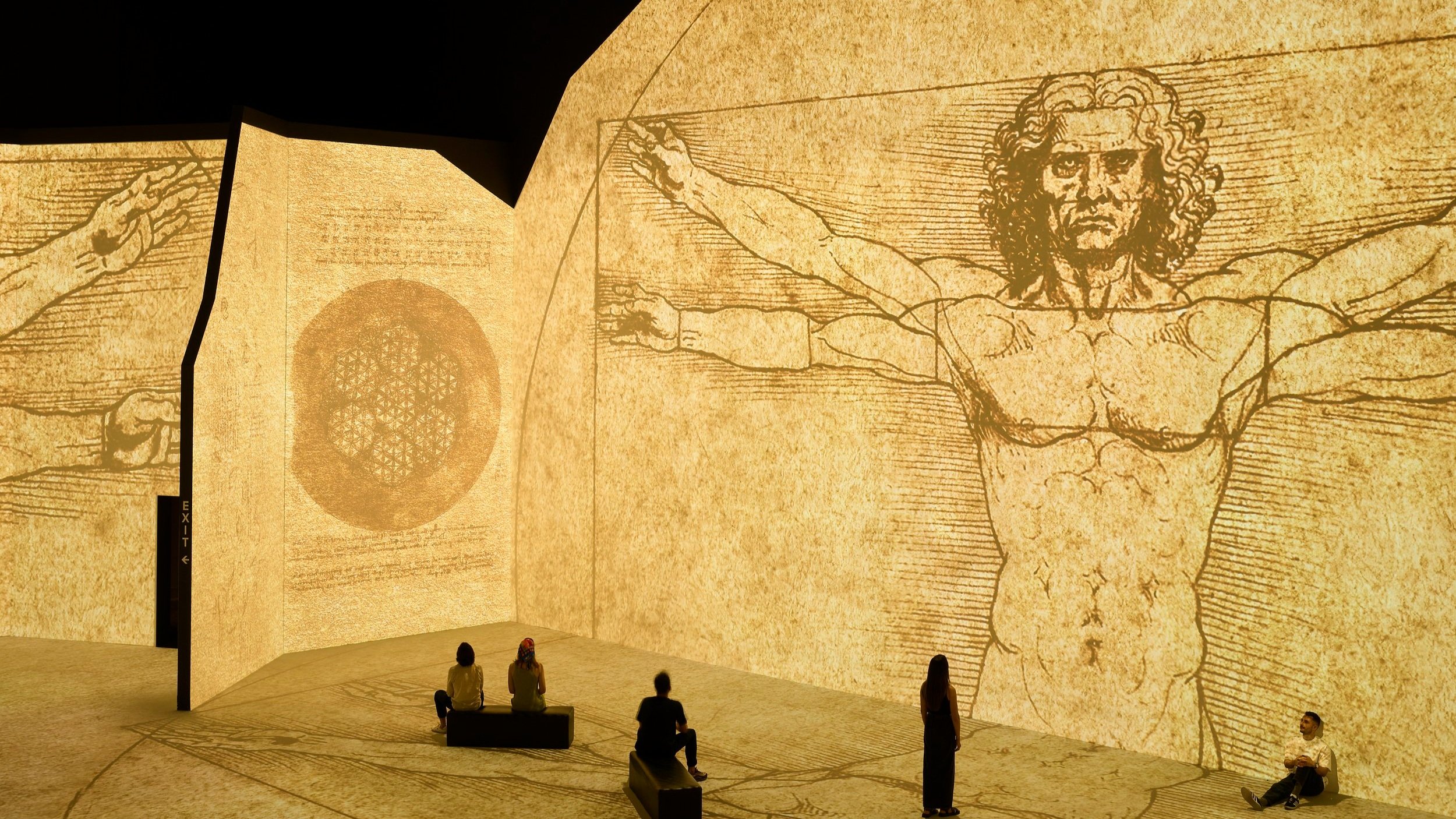What Inspired Jackson Pollock’s Art?
Rudy Burckhardt. Jackson Pollock at work, 1950. Archives of American Art, Smithsonian Institution.
Jackson Pollock was an iconic figure in the art world. His art wasn't simply the result of strokes on canvas; it was a reflection of his life experiences, influences, and a journey through artistic exploration. Delving into the layers of Pollock’s inspirations allows us to better understand the genesis of his artistic genius.
In this article I examine the layers of influence that molded Pollock’s art, from surrealism and automatism to his personal struggles and the evolution of his groundbreaking technique.
1. The Early Influences
Native American Art
In the vast tapestry of Jackson Pollock’s artistic journey, the threads of Native American art are woven intricately, adding a unique and unconventional touch to his creative expression. Native American art, with its bold patterns, organic forms, and spiritual resonance, influenced Pollock’s artistic sensibilities from an early age.
Pollock’s exposure to Native American art and artifacts during his childhood in the American West acted as a prism, refracting myriad cultural influences into his artistic vision. The vibrancy of colours, the intricate geometries, and the powerful symbolism that permeated Native American creations became a source of fascination and inspiration.
The influence of Native American art went beyond mere aesthetics. It tapped into something deeper within Pollock - an understanding of the interconnectedness of all things. The bold patterns found in woven textiles, pottery, and ceremonial objects resonated with his own belief in the rhythms and connections that underlie existence.
One cannot discuss the impact of Native American art on Pollock’s work without acknowledging its spiritual dimensions. The spiritual qualities imbued in Native American art - an affinity with nature, a connection to the divine, and a celebration of life’s cyclical nature - seeped into Pollock’s own artistic explorations. His canvases are where he channeled the spiritual essence he felt in the presence of Native American art.
The Southwest Landscapes
For Jackson Pollock, the rugged and sublime landscapes of the American Southwest were the backdrop against which his artistic journey unfolded.
The expansive deserts, majestic canyons, and wide-open skies of the Southwest shaped Pollock’s perception of space, scale, and colour. The earthy tones and stark contrasts that defined this region’s terrain found their way into his palette, lending his works a distinctive and unmistakable quality.
The vastness of the Southwest, with its sweeping panoramas and seemingly infinite horizons, awakened in Pollock a sense of awe and wonder. It was a space where the boundaries of imagination expanded, where the limitless expanse of nature mirrored the boundless potential of artistic creation.
The raw energy and power of the Southwest’s geological formations are echoed in Pollock’s dynamic and energetic brushstrokes. His canvases became landscapes of their own, capturing the geological forces that had shaped him and his art.
2. The Journey Through Art Movements
Jackson Pollock embarked on a captivating journey through various art movements that would contribute to the evolution of his style and the enrichment of his creative palette. Each movement acted as a stepping stone, guiding him toward a deeper understanding of his own artistic identity and pushing the boundaries of his imagination.
Surrealism and the Unconscious
In the midst of the 20th century, the Surrealist movement emerged as a powerful force that sought to unravel the mysteries of the human subconscious. Pollock, intrigued by the Surrealists’ commitment to tapping into the unconscious mind and exploring dreams and fantasies, found a resonance between their ideals and his own artistic aspirations.
Surrealism encouraged artists to voyage into the uncharted realms of the mind, bypassing conscious reasoning and engaging with the enigmatic realm of dreams. This movement provided Pollock with a newfound avenue to liberate his creativity from the confines of traditional artistic conventions.
Under the influence of Surrealism, Pollock’s canvases transformed into dreamscapes. His artworks became an open invitation to the viewer’s subconscious, a portal through which one could explore the depths of their own psyche.
Central to Surrealism was the concept of automatism - a technique that involved spontaneous and unplanned creation, often with little conscious intervention. This notion resonated deeply with Pollock’s belief in the untamed power of the subconscious mind.
Automatism liberated Pollock from the constraints of deliberate planning. By relinquishing conscious control, he could tap into the raw, unfiltered expressions that flowed from within him. His art became a vessel for authentic emotions and impulses.
It was within the realm of automatism that Pollock’s iconic drip technique took root. The act of dripping and pouring paint onto the canvas allowed him to bypass rational thought and access a state of pure creation. The result was an explosive dance of colours and forms - a symphony of emotions translated onto the canvas.
Mexican Muralism
During the 1930s, Pollock’s artistic voyage took an unexpected detour when he worked as an assistant to the Mexican muralist David Alfaro Siqueiros. This experience exposed him to the grandeur of large-scale, politically charged public art and planted the seeds of social consciousness within him.
Siqueiros’ murals were imbued with political messages, depicting the struggles and aspirations of the working class. This exposure introduced Pollock to the idea that art could be a powerful tool for social commentary and change.
The impact of Mexican muralism on Pollock was multidimensional. While he didn’t directly adopt the overt political themes of Siqueiros’ murals, the scale, intensity, and audacity of this art form left an indelible mark on his artistic psyche.
Cubism and Picasso
The echoes of Cubism, a revolutionary art movement that shattered conventional perspectives, reverberated through Pollock’s creative journey. The works of the pioneering artist Pablo Picasso held a special place in Pollock’s heart, contributing to the multifaceted tapestry of his inspirations.
Cubism, with its deconstruction of form and simultaneous representation of multiple viewpoints, challenged Pollock to reconsider the very essence of artistic representation. This movement encouraged him to break free from the confines of realism and venture into the realm of abstraction.
Picasso’s Innovations
Picasso’s groundbreaking techniques, such as collaging and fragmenting, expanded Pollock’s creative toolkit. The notion that art could exist beyond the confines of a single perspective resonated with Pollock’s desire to break away from conventional norms.
As Jackson Pollock traversed the landscape of art movements, he absorbed the essence of Surrealism’s introspection, embraced the freedom of automatism, drew inspiration from the political vigour of Mexican muralism, and integrated the multidimensional perspectives of Cubism. Each chapter of this journey marked a stepping stone toward the creation of an artistic language that was uniquely his own.
3. The Psyche of Jackson Pollock
In terms of artistry, the human psyche serves as a wellspring of inspiration, driving creators to translate their emotions, experiences, and inner conflicts onto the canvas. Jackson Pollock’s art is no exception, as it vividly reflects the intricate interplay between his personal struggles, psychological exploration, and the catharsis that emerged from within.
Psychoanalysis and Expression: How Personal Struggles Impacted His Art
As an artist, Jackson Pollock was not shielded from the tumultuous aspects of life. He navigated personal struggles, facing challenges that would invariably imprint themselves onto his creations. The field of psychoanalysis provided a lens through which he could explore the intricate connections between his subconscious mind and his artistic output.
Pollock’s engagement with psychoanalysis was, in many ways, a quest for self-understanding and healing. Through the act of creation, he found a form of therapy - one that allowed him to externalize his emotions and transform them into tangible expressions on canvas.
His struggles with depression, anxiety, and alcoholism were battles that often played out in the raw, emotional landscapes of his art. His paintings became a mirror reflecting the turmoil within, inviting viewers to witness the depths of his emotional journey.
Jungian Influences: The Subconscious as a Source of Creativity
Among the psychological theories that captured Pollock’s imagination, the ideas of Carl Jung held a particular fascination. Jung’s exploration of the collective unconscious and archetypal symbols resonated deeply with Pollock’s belief that art could provide a gateway to the hidden realms of the mind.
Jung’s concept of archetypes - universal, primordial symbols - sparked a new dimension of meaning in Pollock’s work. Through the use of abstract forms and shapes, Pollock tapped into the symbolic, allowing his art to communicate with a language beyond words.
In Pollock’s worldview, the act of creation was a dance between conscious thought and the mysterious forces of the unconscious. He saw his art as a conduit for channeling these hidden energies onto the canvas, resulting in works that captured the essence of his inner world.
Emotional Catharsis: Transforming Pain into Visual Poetry
The emotional catharsis that Pollock experienced through his art was a transformative process - one that turned his pain, joy, and introspections into vibrant visual poetry. His canvases became a stage on which he could externalise his emotions, providing a release valve for the complexities of his inner life.
Pollock’s art was a release for emotions that defied verbal articulation. The abstract forms and gestural strokes on his canvases served as a direct conduit for his emotions, bypassing language and allowing viewers to connect with the raw, unfiltered essence of his experiences.
Each of Pollock’s works is a layered tapestry of emotions, constructed through an intricate interplay of colours, shapes, and textures. His ability to translate his inner emotional landscape onto the canvas transformed his art into a visual diary of sorts - a testament to the power of creativity as a means of emotional release.
As we delve into the psyche of Jackson Pollock, we uncover a world of emotional complexity, psychological exploration, and the transformative power of artistic expression. Through his journey, we witness the process by which personal struggles are transmitted into visual narratives that continue to resonate with audiences around the world.
4. Evolution of a Technique
In the world of art, innovation often arises from the confluence of experimentation, creativity, and a profound departure from convention. Jackson Pollock’s artistic journey took a transformative turn as he pioneered a technique that would become synonymous with his name - the iconic drip painting.
Drip Painting Emerges: The Iconic Technique that Redefined Modern Art
The emergence of drip painting marked a pivotal moment not only in Pollock’s career but also in the annals of art history. This radical departure from traditional brushwork elevated his work from the canvas to an exploratory space where gesture, energy, and movement converged.
At the heart of Pollock’s drip painting technique lay an unbridled energy and freedom of movement. By suspending his canvas on the studio floor, he could approach it from all angles, allowing gravity to guide the rhythmic flow of paint onto the surface. The resulting compositions were a dance - a choreography of motion captured in suspended animation.
Drip painting liberated Pollock from the constraints of traditional brushstrokes. With a paint-laden brush or even a stick, he channeled his emotions and energy directly onto the canvas. The absence of predefined forms enabled him to transcend the limitations of representation, inviting viewers to engage with the art on an intuitive and visceral level.
Nature: Capturing the Chaos and Harmony in Drips
Pollock’s drip paintings are often likened to the chaotic yet harmonious rhythms found in nature. The spontaneous arrangement of drips, splatters, and lines on the canvas mirrored the dynamic forces at play in the universe - a testament to Pollock’s ability to channel the inherent energy of his surroundings.
Nature’s chaotic beauty found its voice in Pollock’s work. Just as the elements of the natural world interact in unpredictable yet harmonious ways, the intricate interplay of colors and lines in his paintings created a visual symphony that resonated with the human subconscious.
Within the apparent chaos of the drips lay an underlying order - a visual harmony that emerged through the spontaneous movements of Pollock’s hand. This paradoxical combination of chaos and structure captivated viewers, drawing them into a multisensory experience.
Composition: The Spontaneity of Expression in Drip Art
Drip painting embodied an essence of spontaneity, where the act of creation flowed from the unconscious mind onto the canvas. This technique transformed Pollock into both artist and observer, as he relinquished control and allowed the paint to become the conduit for his artistic expression.
The absence of conscious planning fostered an organic dialogue between artist and medium, resulting in compositions that felt unburdened by preconceived notions.
Each canvas transformed into a dynamic arena of artistic exploration. Pollock’s movements became a choreography of action, and the canvas bore witness to the physicality of his creative process. The resulting works captured a snapshot of time and motion - a frozen moment of artistic energy.
As we delve into the evolution of Pollock’s drip painting technique, we witness a revolution that redefined the very nature of artistic expression. Through this innovative approach, Pollock not only transcended the conventional boundaries of art but also forged a profound connection between his work, his surroundings, and the viewers who continue to be captivated by the energetic dance he choreographed on canvas.
5. Beyond the Canvas
Jackson Pollock’s artistry transcended the confines of the canvas, delving into the realm of the personal.
Personal Struggles: The Link Between Mental State and Artistic Expression
Pollock’s artistic journey was intertwined with his personal struggles - a fusion that would leave an indelible mark on his creations. The raw emotion and vulnerability he channeled onto the canvas were often rooted in the depths of his own psyche.
Art provided Pollock with a conduit for articulating his innermost thoughts and emotions. His art was where he could externalize his mental and emotional turmoil, transforming pain into visual poetry. The act of creation became a form of therapy - an avenue for him to navigate the labyrinth of his own mind.
Pollock’s willingness to expose his vulnerabilities was a testament to the authenticity of his art. Through the abstract forms, chaotic lines, and splattered colors, he revealed his inner world to the viewer, inviting them to confront their own emotions and experiences.
Alcohol and Inhibition: The Paradox of Influence on Pollock’s Work
The paradox of inhibition and freedom played a significant role in shaping Pollock’s artistic process. His complex relationship with alcohol both facilitated and hindered his creative expression, leading to a mix of liberation and constraint.
Alcohol became a double-edged sword for Pollock. On one hand, it liberated his inhibitions, allowing him to approach the canvas with an unfiltered sense of abandon. On the other hand, it blurred the boundaries between conscious and unconscious, challenging the authenticity of his artistic choices.
While alcohol could facilitate uninhibited expression, it could also obscure intention and dilute artistic integrity. The resulting tension between creative liberation and artistic discipline shaped the multifaceted layers of his work.
Cars and Urban Life: The Pulse of Modernity in His Creations
As an artist deeply immersed in the mid-20th century, Pollock was inevitably influenced by the technological and societal shifts of his time. The rapid pace of urbanisation and the symbolism of the car infused his art with an emblematic representation of modernity.
Pollock’s art echoed the rhythm of urban life - the vibrancy and chaos of the cityscape translated onto the canvas through energetic brushstrokes and dynamic lines. His works became a visual reflection of the era’s vitality and restlessness.
The car, an iconic emblem of progress and movement, found its way into Pollock’s art. Just as the car represented the promise of new horizons, Pollock’s compositions captured the spirit of exploration and the perpetual journey of self-discovery.
My Final Thoughts on Jackson Pollock’s Inspirations
As I conclude this journey through the inspirations that shaped Jackson Pollock’s art, we’re left with a profound appreciation for the multifaceted nature of his creative genius. Pollock’s ability to draw inspiration from a diverse range of sources, both internal and external, underscores the complexity and depth of his artistic vision.
Pollock’s artistry serves as a testament to the boundless sources of inspiration that artists can tap into. His ability to transcend traditional artistic boundaries and embrace influences as varied as Native American art, jazz music, and the urban landscape, showcases the interconnectedness of creative expression with the world around us.
Pollock’s exploration of his own psyche and emotions through art speaks to the therapeutic and transformative potential of creativity.
As we reflect on the myriad inspirations that fueled Pollock’s artistic journey, we are reminded that the creative process is as diverse as the human experience itself.
I have written other articles about Vincent Van Gogh and where to view Frida Kahlo and Gustav Klimt artworks, that you may also find interesting.
I hope you have enjoyed this article about Jackson Pollock. I would love to hear your thoughts, please feel free to email me at sarahransomeart@gmail.com.







